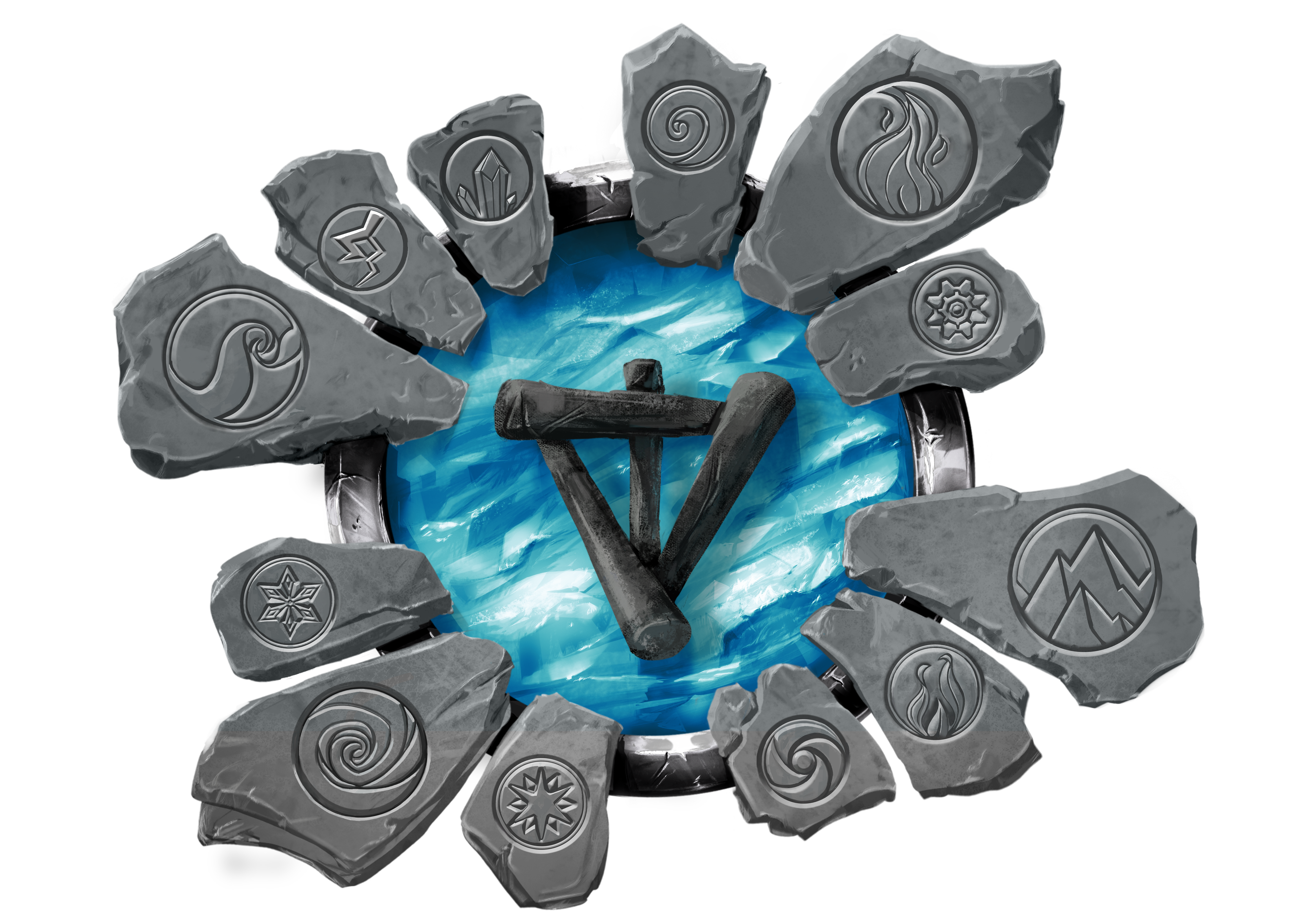Game Rules
Overview
Tetraverse TCG is a multiplayer trading card board game where each player represents an elemental kingdom from the world of Akhira. The inhabitants of Akhira harness the magical power of resources scattered throughout the land to master elemental abilities.
Tetraverse TCG is a card game. That means how well you perform is based on your deck-building ability. Players draw cards from decks they have built to create a force capable of dominating the playing field. Is your strategy to quickly get as many units into play before your opponent can get a proper footing? Or will you play the long game and develop powerful structures and beings? Or maybe the use of equipment and enchantments is more to your preference. The player decides before even playing the game how they wish to approach their plan of attack.
Tetraverse TCG is a board game. Cards are placed strategically into play. Players place equippable Tamers and Animas, upgradable Structures, mana-generating Landscapes, and Event cards to control the playing field.
Card Types
There are 7 different types of cards in Tetraverse TCG: Anima, Tamer, Structure, Landscape, Event, Item, and Mana.
-
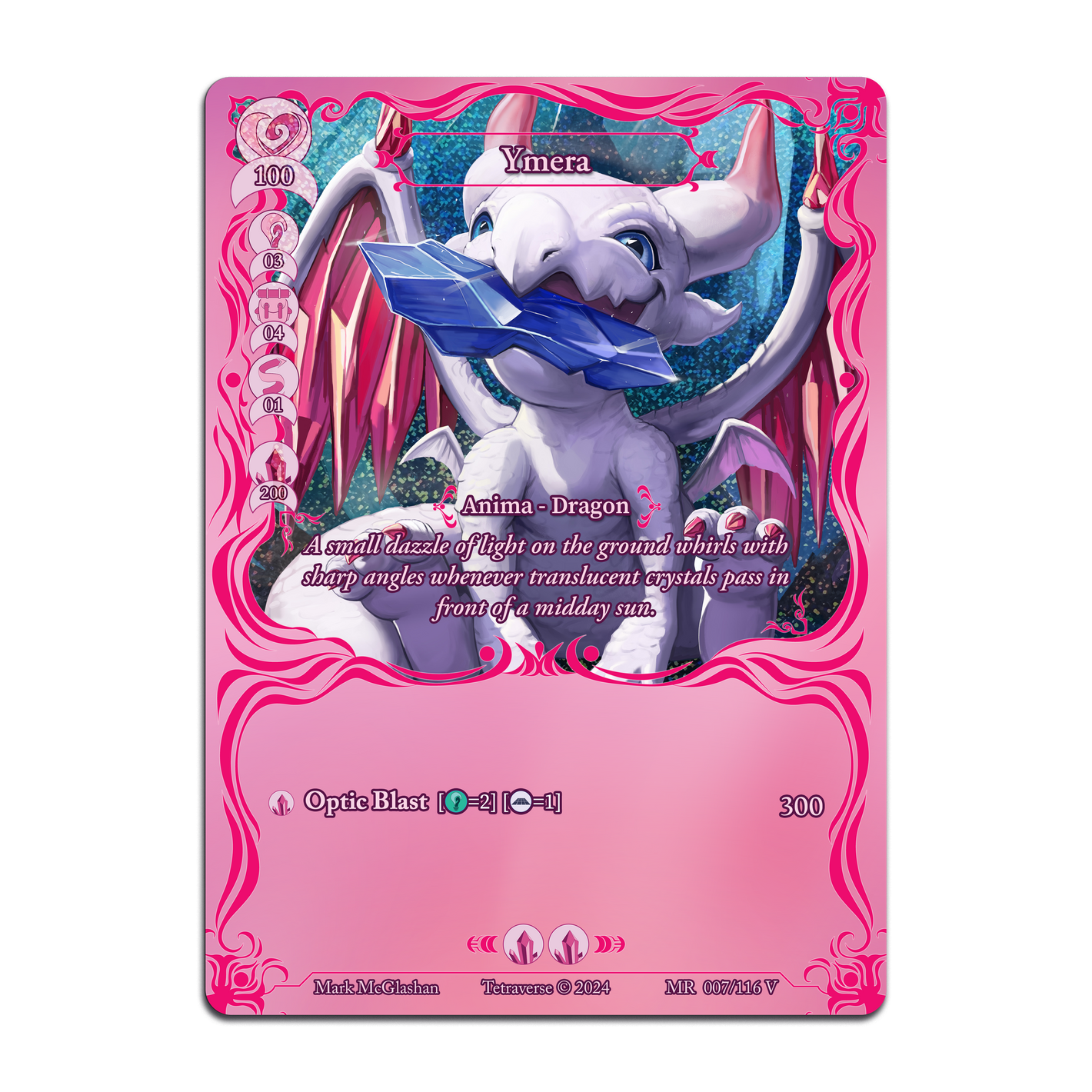
Anima
Anima are mobile units placed on the Field. An Anima is also capable of manifesting into a stronger form. A 1st Manifest Anima is placed into play by tapping Mana equal to its Placement Cost. 1st Manifest Anima are those that do not depict another Anima that it manifests from on the left side of the card. If a player has a higher Manifest Anima that manifests from an Anima in play, it can be placed on top of the compatible Anima. To do so, the player must tap Mana equal to its Placement Cost.
*
In addition to Placement Costs, Anima have stats such as Health, Intellect, Dexterity, and Mobility. These are further described in the Statistics section. Anima also have an element-based Strength trait which increases the amount of damage done to units with the associated element.
-
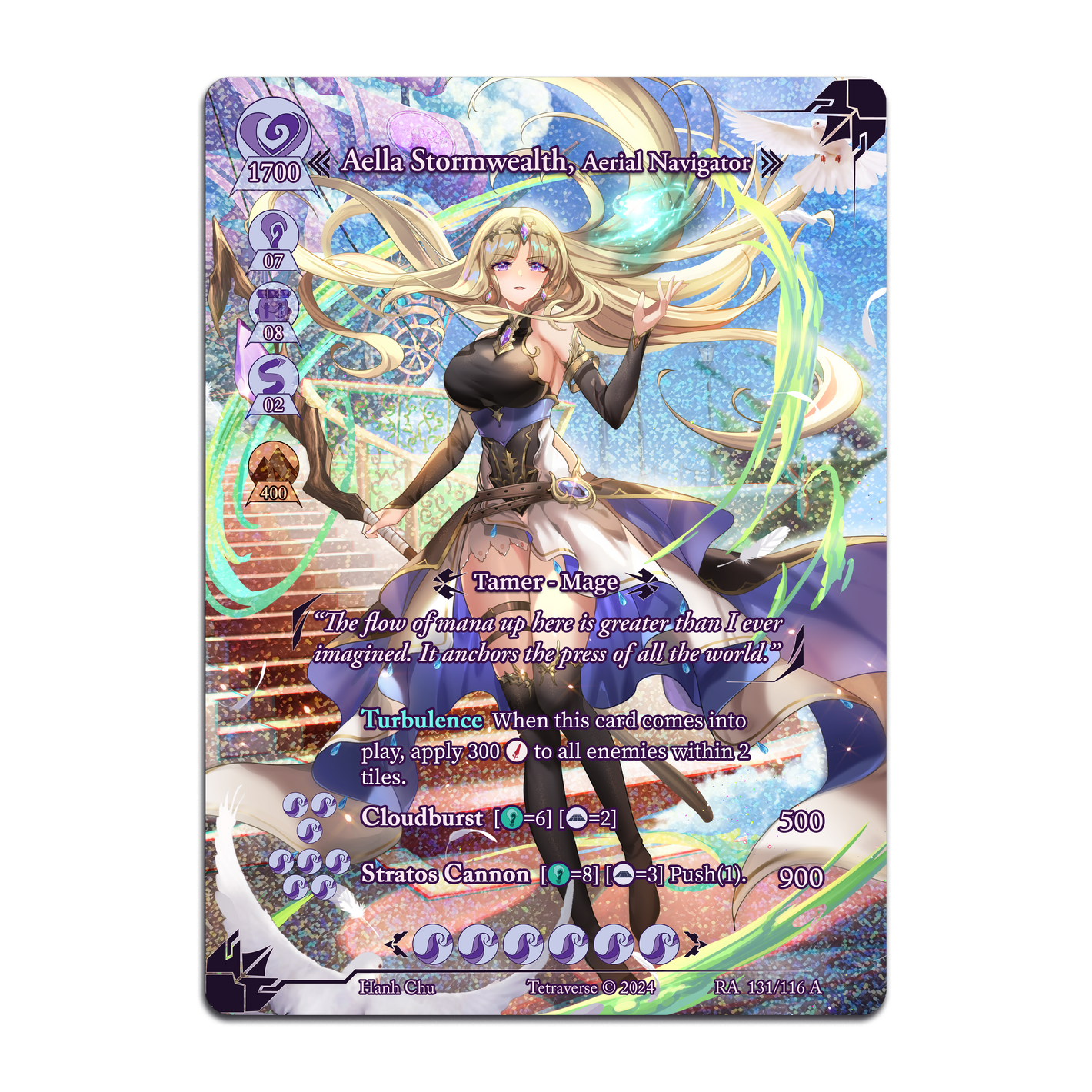
Tamer
A Tamer is a mobile unit that is placed onto the Field. Like Anima, they have Stats, Placement Cost, and Abilities. Structures (aside from the Castle) must be placed adjacent to an existing Tamer.
-
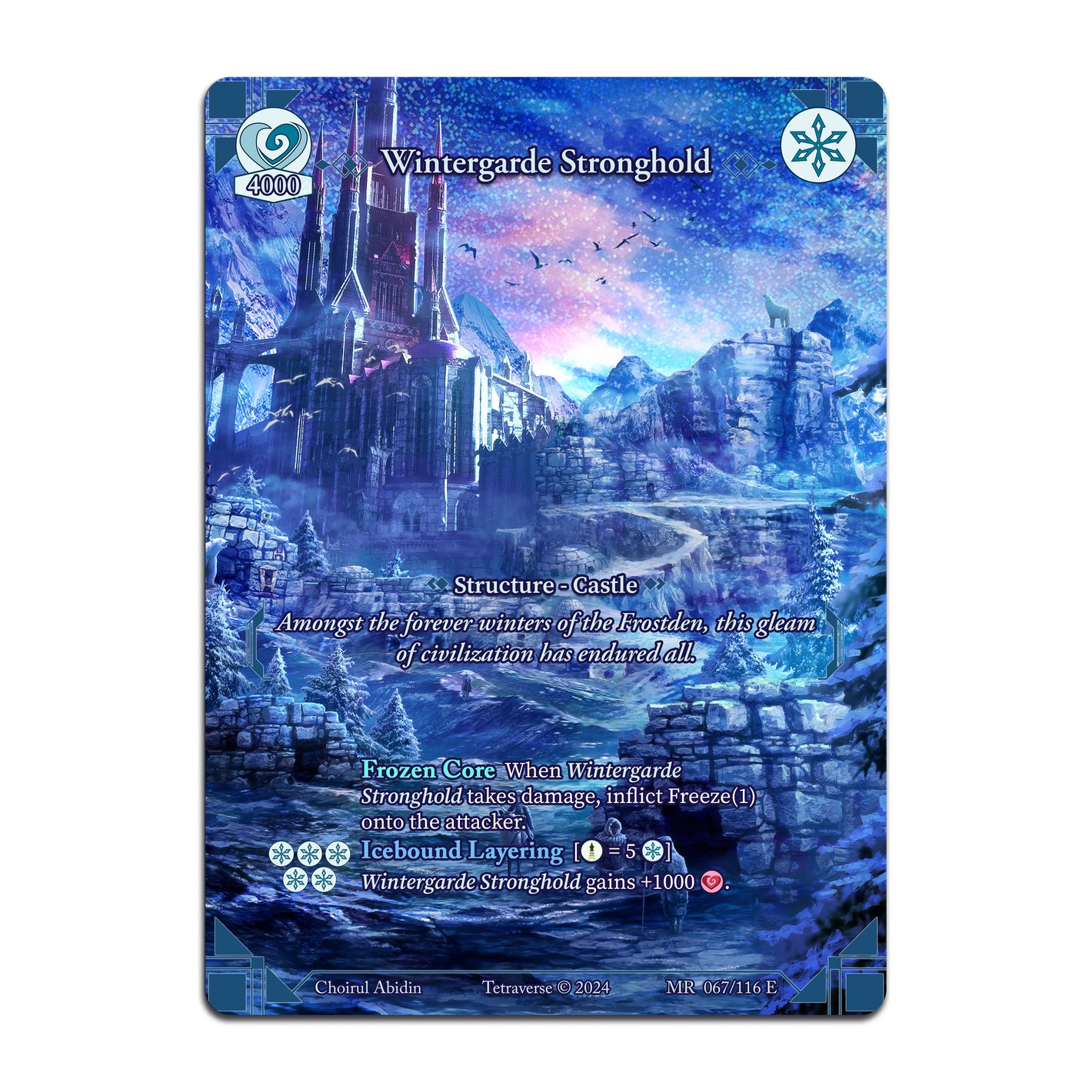
Structure: Castle
At the start of the game, each player places their Castle card into play. This allows for the placement of other units into play. When this Structure is destroyed, no additional units can be placed. Therefore, a primary goal of the game is to destroy each opponent's Castle.
-
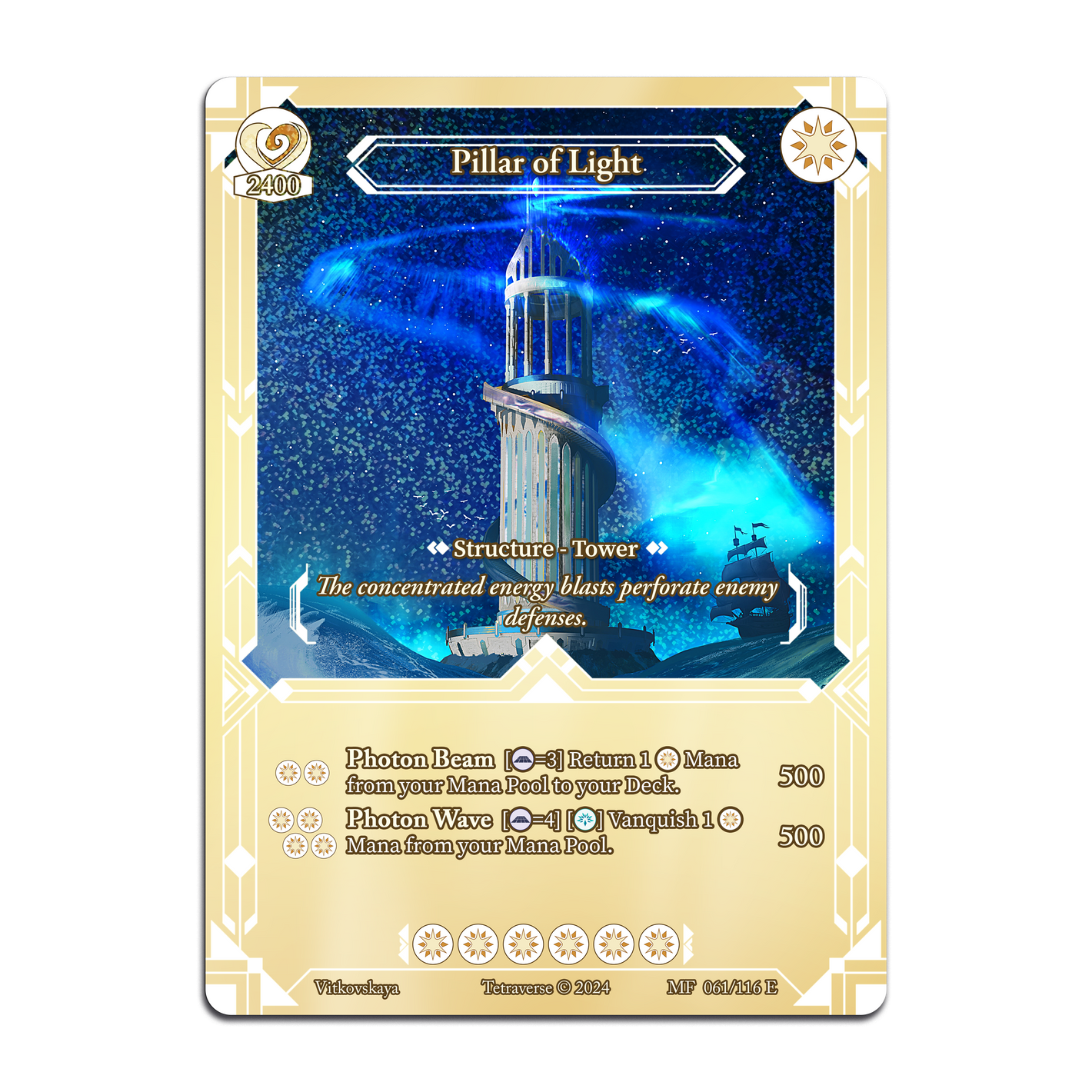
Structure: Tower
Towers are offensive structures that have high Health values and several abilities. Towers are used to cast abilities against nearby enemies. They can be placed defensively, such as to protect the Castle from enemies, or offensively to help advance the position of allied units.
-
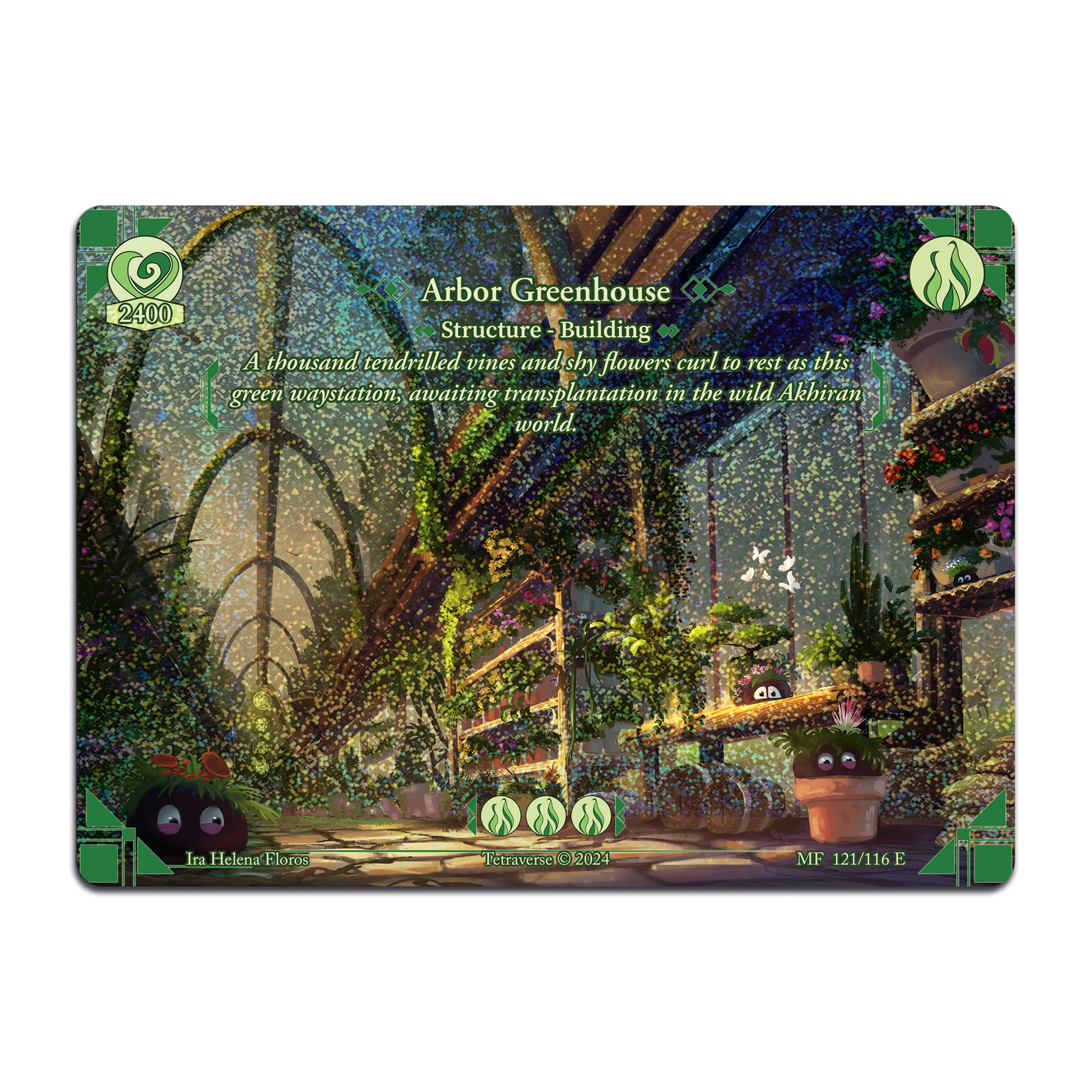
Structure: Building
Buildings provide utility to units in play, such as statistic increases.
-
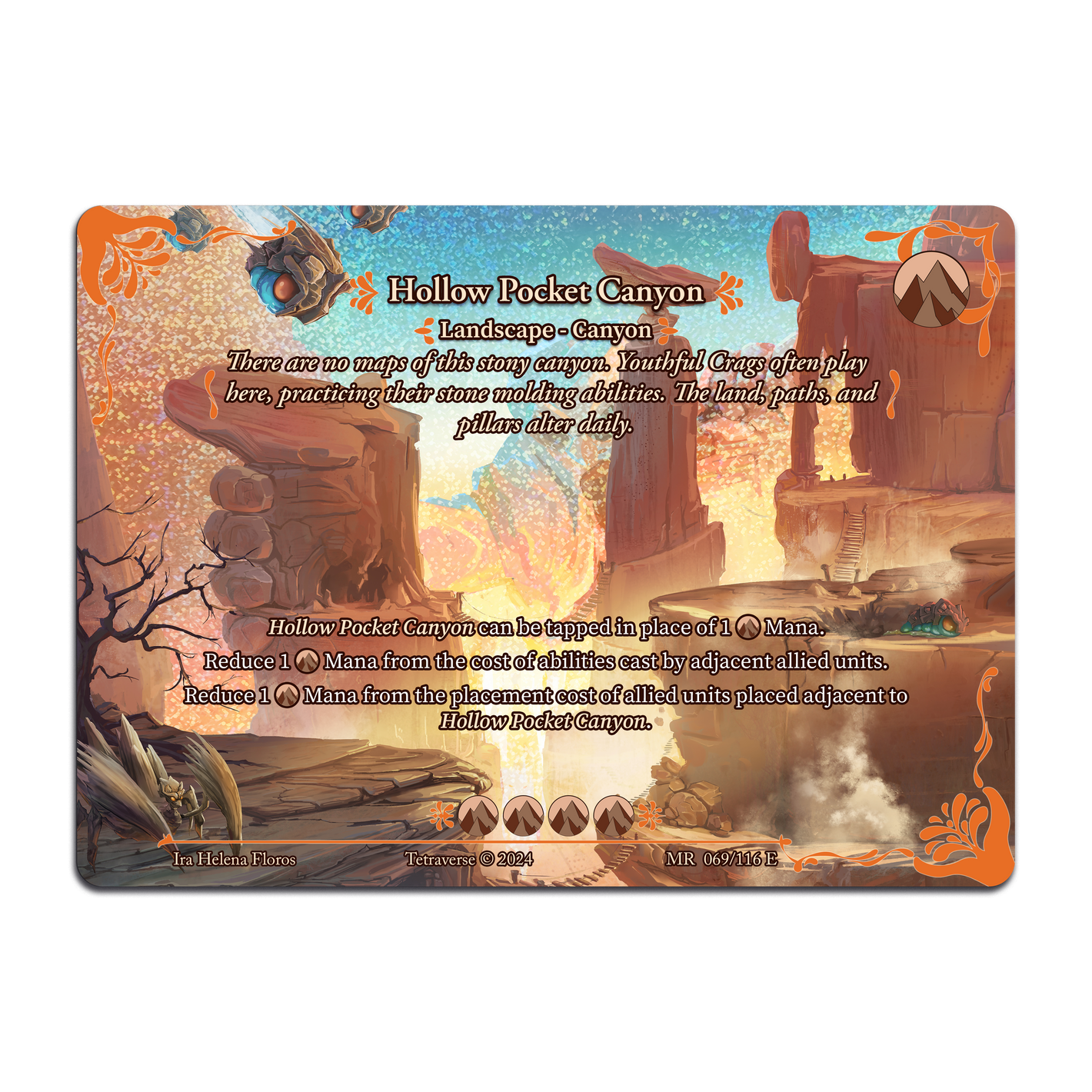
Landscape
Landscape cards can be used to reduce the casting cost of abilities of adjacent allied units or the placement cost of units placed adjacent to them. Additionally, they can be tapped in the place of a mana card.
-
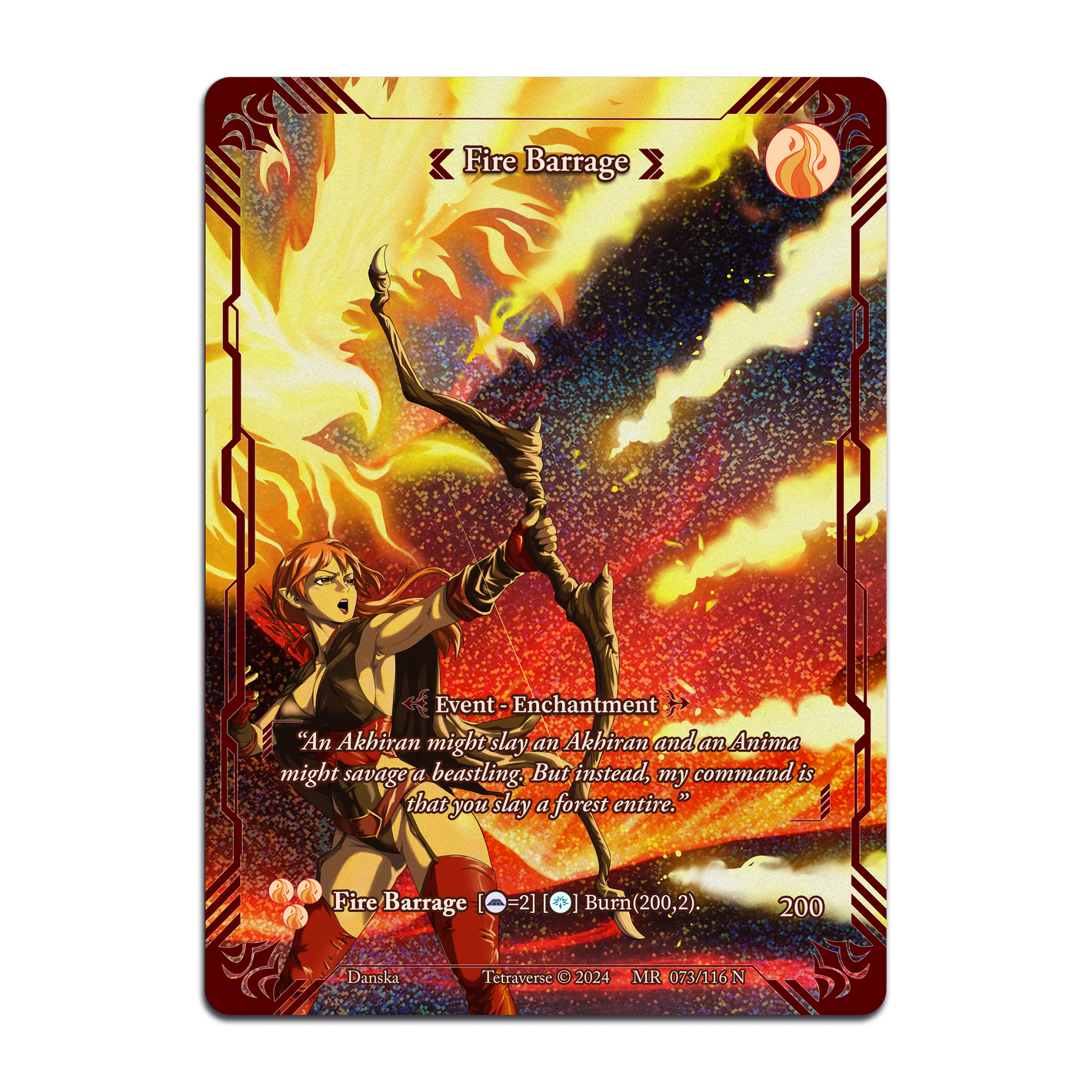
Event: Enchantment
Enchantments can be used instantaneously on any player's turn. These can be used for specific actions, such as applying additional damage to an enemy, drawing cards from your deck, or countering a spell. For a player to use an Enchantment, they must have enough untapped mana available in their Mana Pool to account for the casting cost of the associated ability.
-
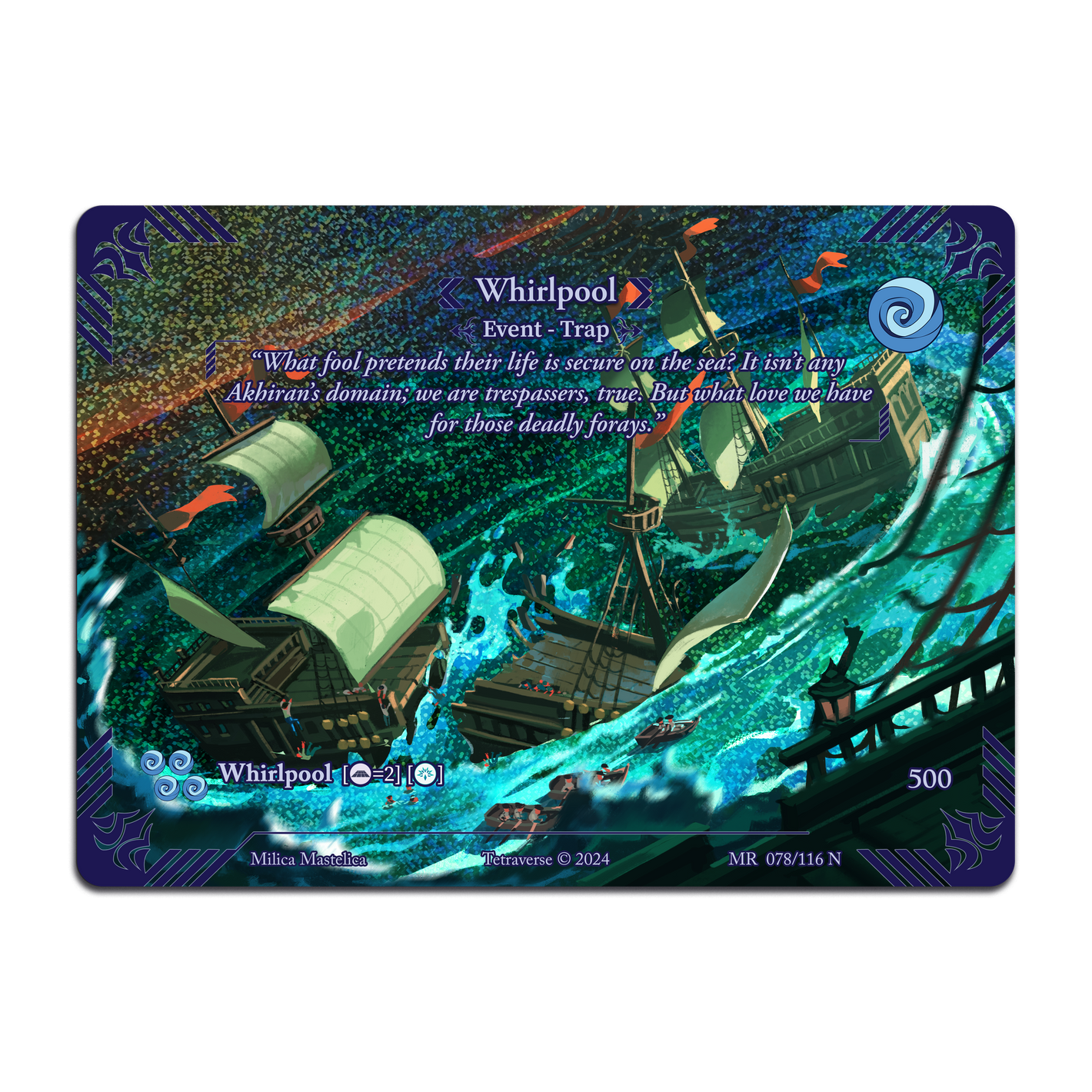
Event:Trap
Traps, which are played face down, can be used when triggered on an opponent's turn when an enemy is within range of the Trap's ability. To activate a Trap, the Player must have enough untapped mana to cover the associated Ability Cost.
-
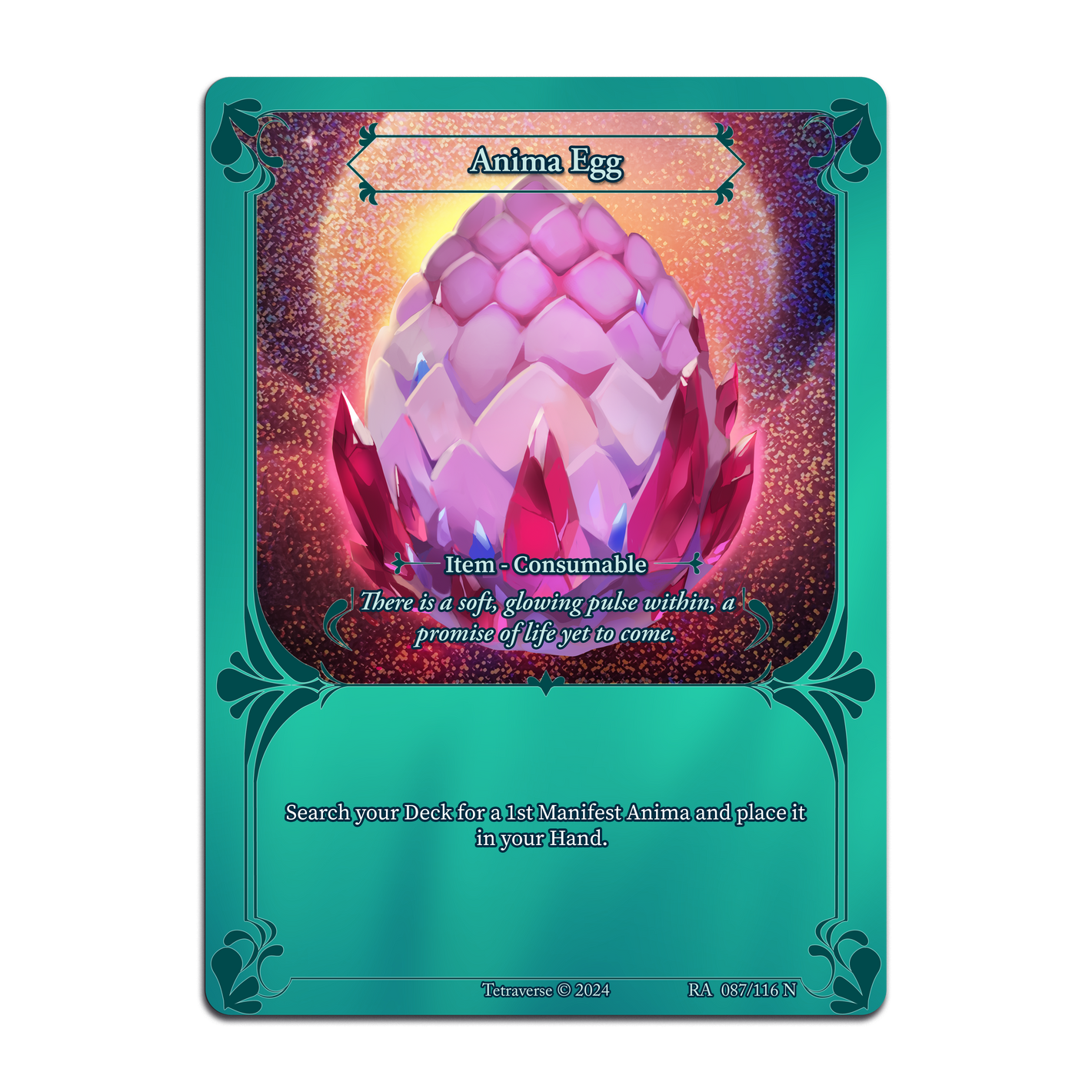
Item: Consumable
Consumable Items are used on a Player's turn to provide immediate utility, such as recovering Health, removing status ailments, or drawing a card. Comsumables, as the name implies, are consumed upon use.
-
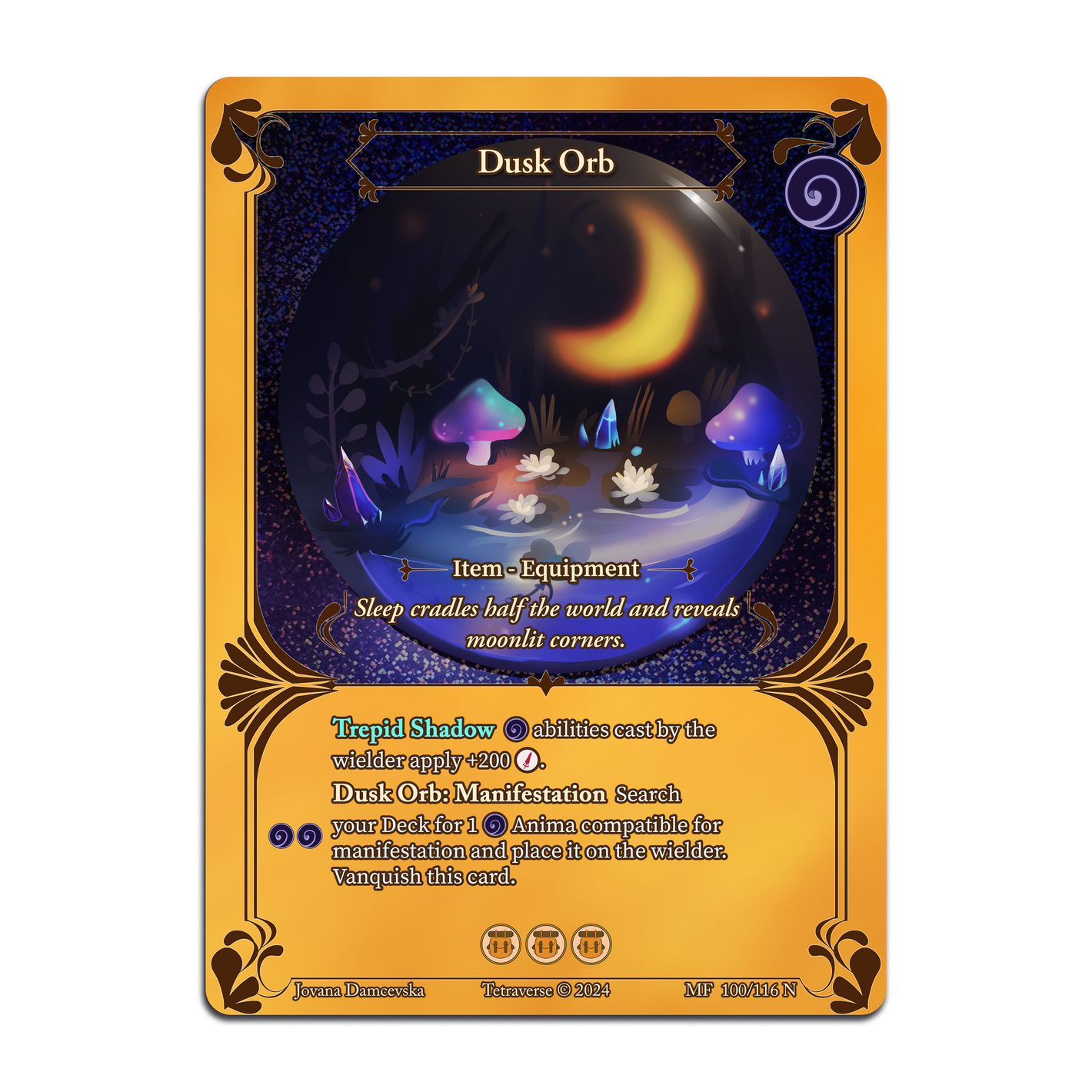
Item: Equipment
Cards that can be equipped, such as to add a status buff or teach an ability.
*
Equipment can be attached to Beings. They can be used to raise Statistics such as Dexterity, Mobility, or Intellect. They can allow the wielder to cast new abilities. However, to equip such an item to an ally, that unit needs to have enough available Dexterity remaining. The Dexterity Cost determines whether the being has "space" to equip the card.
*
When an Anima manifests into a higher level manifestation, all Equipment that are equipped remain so. However, if a card with Equipment is Vanquished, the Equipment goes to the Vanquished Realm. If a card with Equipment is returned to a Player's hand, the Equipment are returned as well, unless otherwise specified.
-
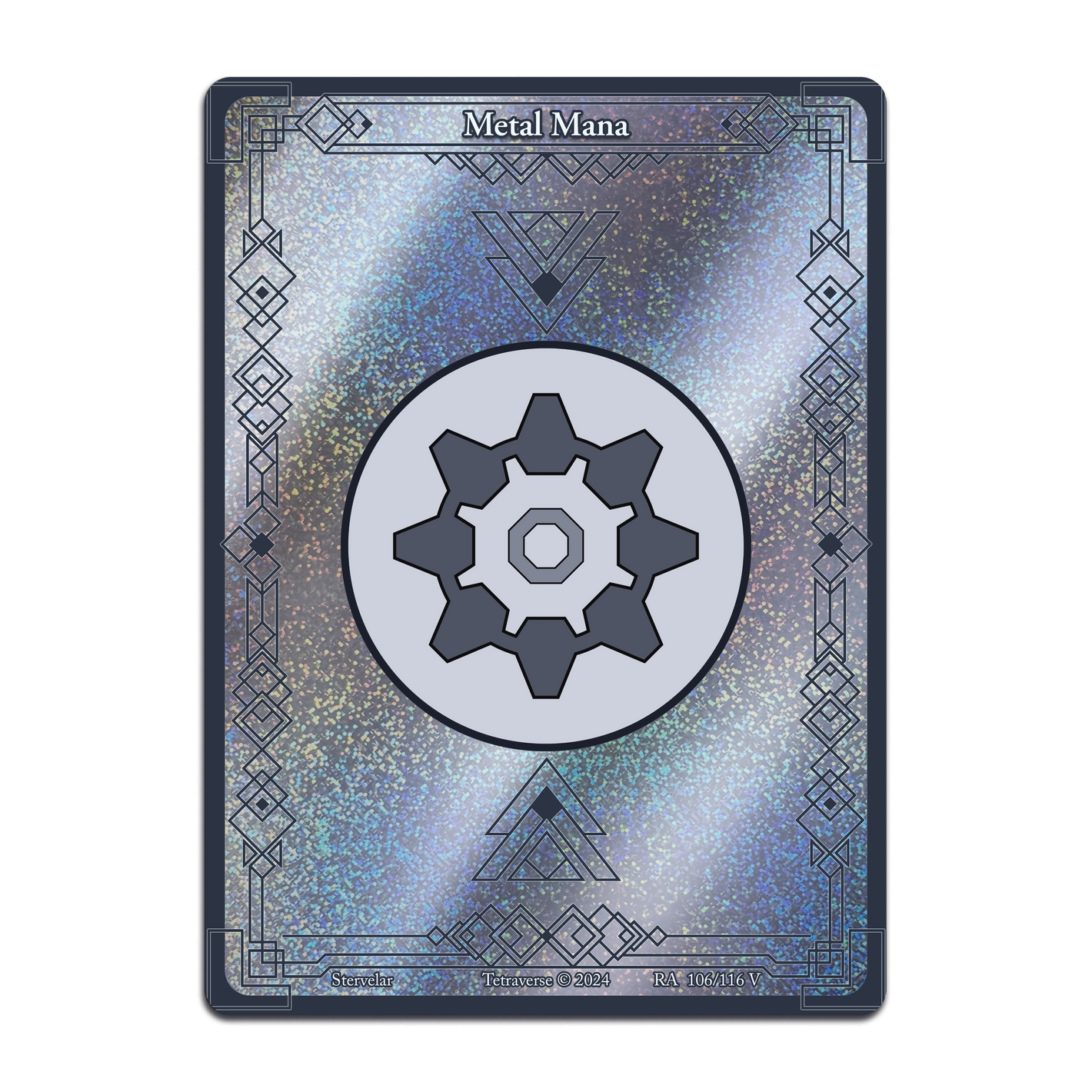
Mana
Mana cards can be placed once per turn into a player's Mana Pool. They are tapped to cover the placement cost of Anima, Tamers, Structures, and Landscapes, the casting cost of Abilities and Enchantments, and the Upgrade cost of Structures.
Element Types
During the Inheritor Age, the Human Empire fractured apart into many different people and nations, each with their own cultures, values, and traditions.
The twelve nations were born and humans began to refine their many talents in a mana-saturated world, each specializing on one of the twelve types of elemental mana forming naturally.
Of these, 4 Mana are known to be Core Mana: Pyro, Terra, Aqua, and Sky.
From the Core Mana, 4 types of Mana can be derived. The 4 Derived Mana include Metal, Nature, Frost, and Lightning.
Finally, the 4 remaining Mana types are called Special Mana: Dusk, Bright, Crystal, and Void.
-
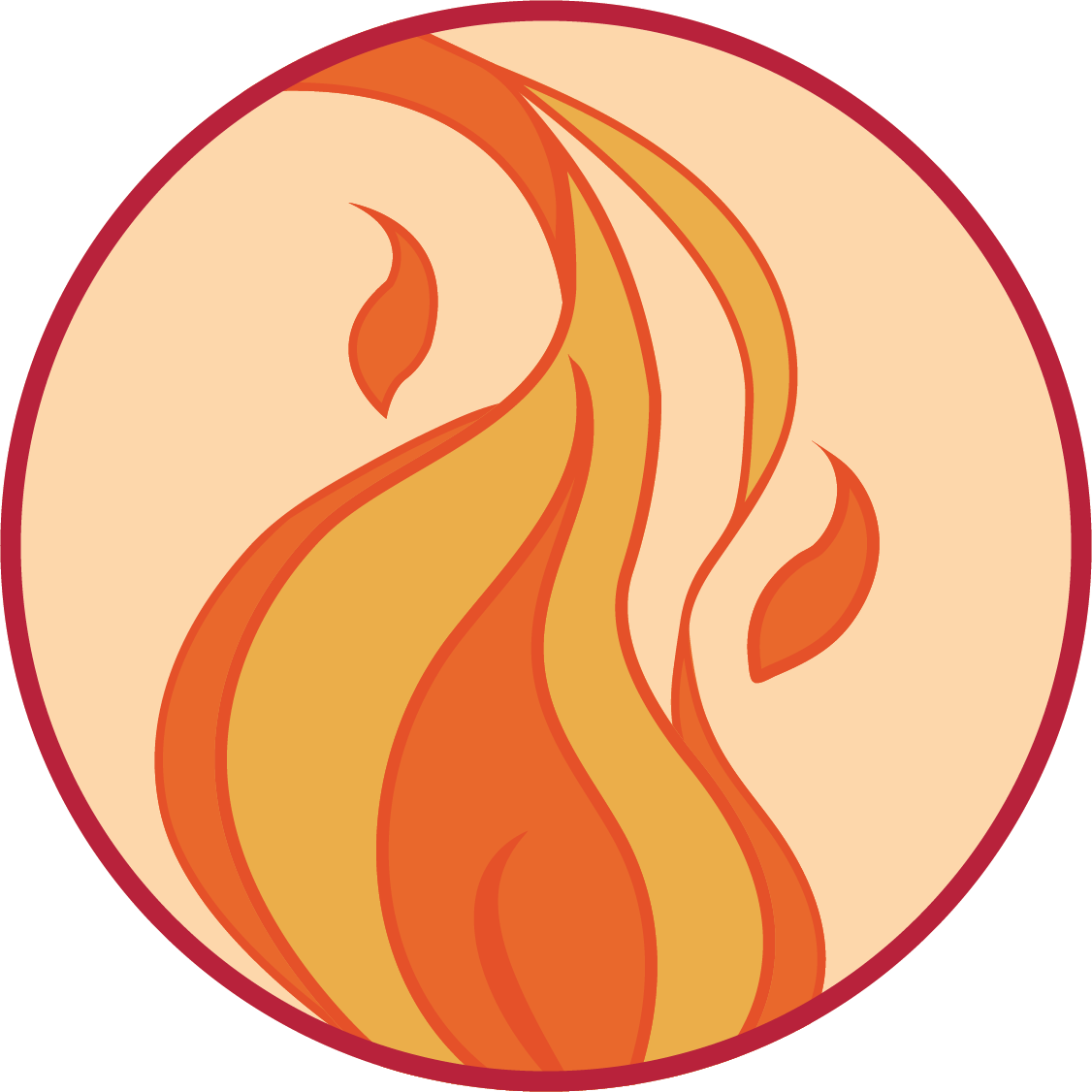
Core: Pyro
- Strong against Nature
- Weak against Aqua -

Core: Terra
- Strong against Sky
- Weak against Sky -
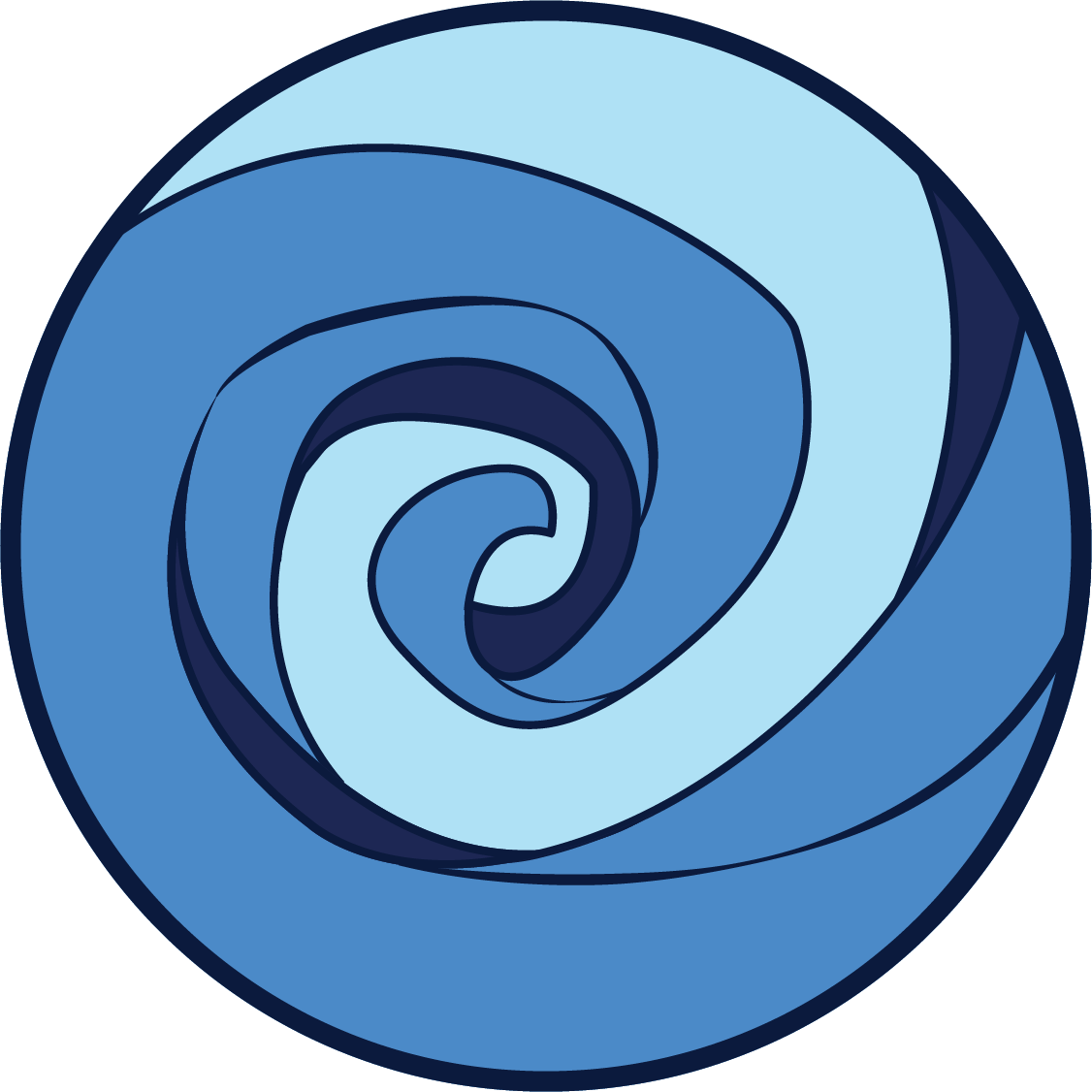
Core: Aqua
- Strong against Pyro
- Weak against Nature -
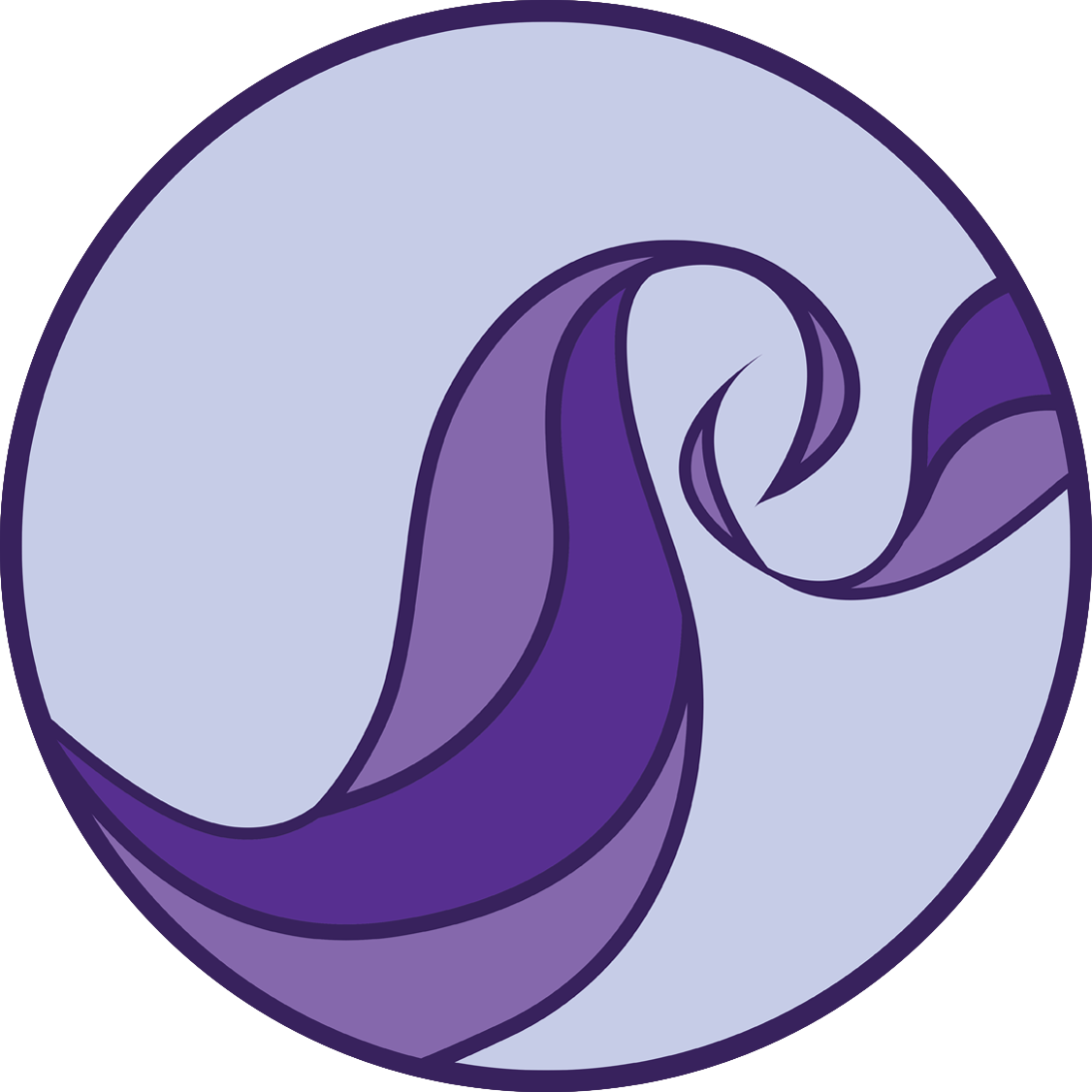
Core: Sky
- Strong against Terra
- Weak against Terra -
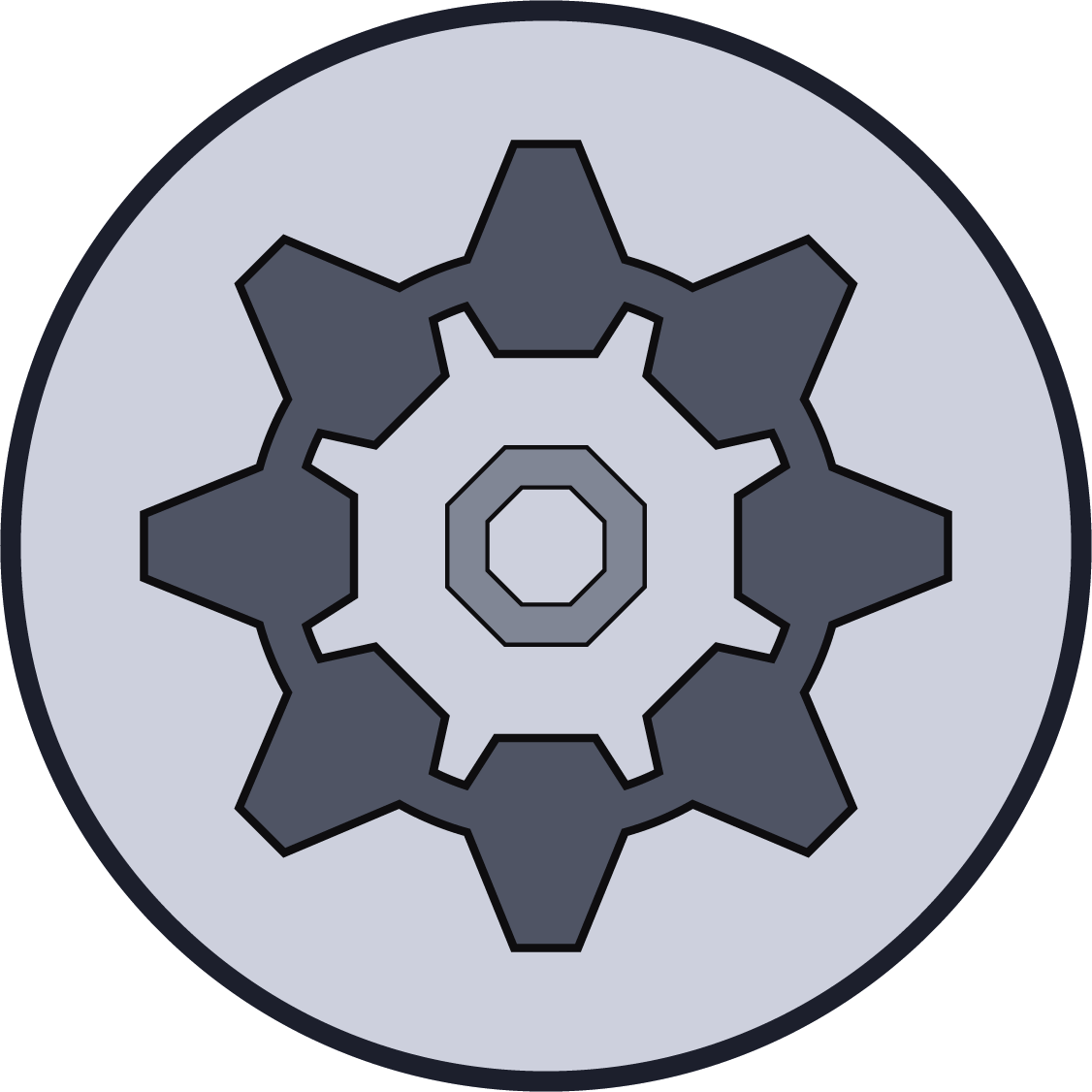
Derived: Metal
- Strong against Frost
- Weak against Lightning
- Derived from Pyro and Terra -

Derived: Nature
- Strong against Aqua
- Weak against Pyro
- Derived from Terra and Aqua -
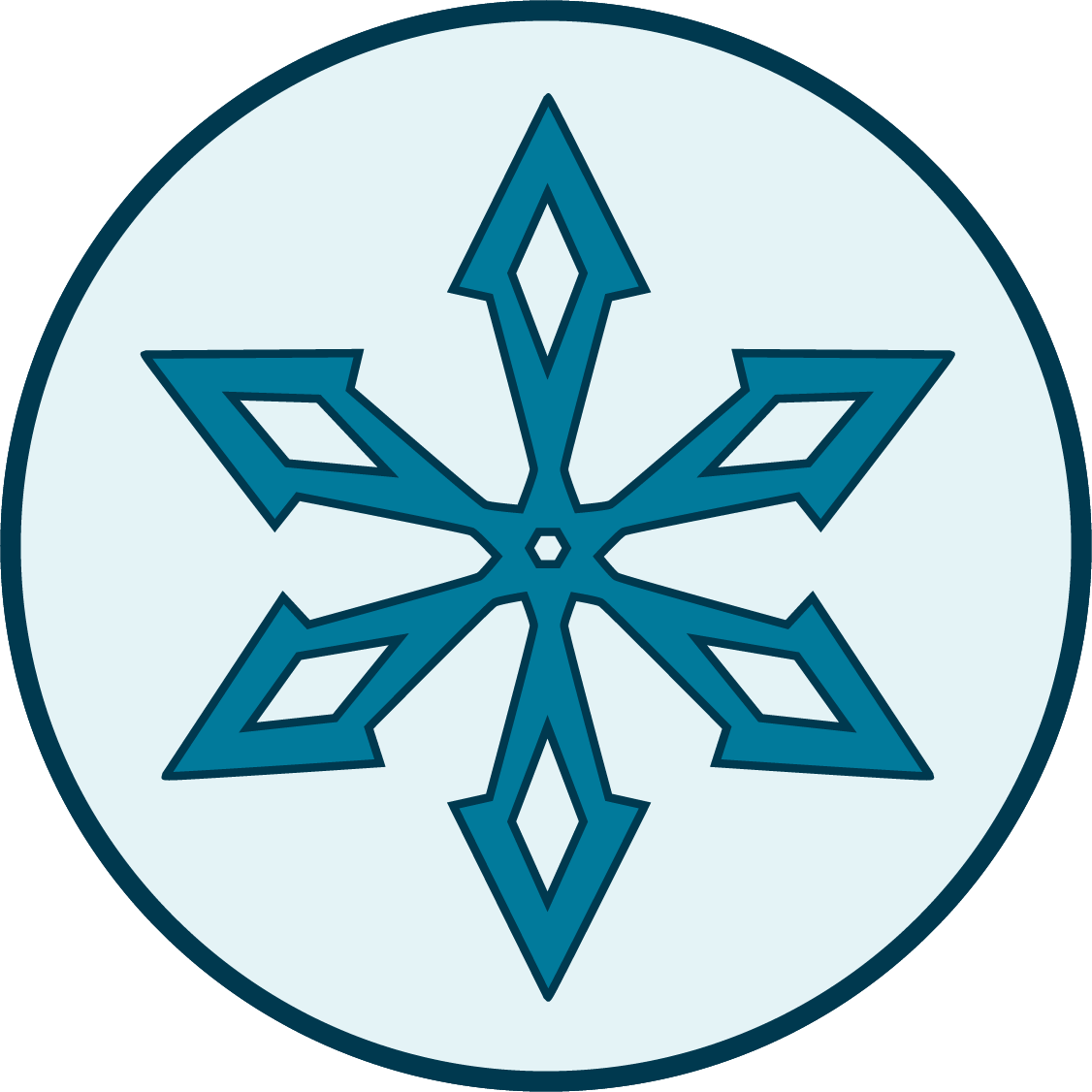
Derived: Frost
- Strong against Lightning
- Weak against Metal
- Derived from Aqua and Sky -
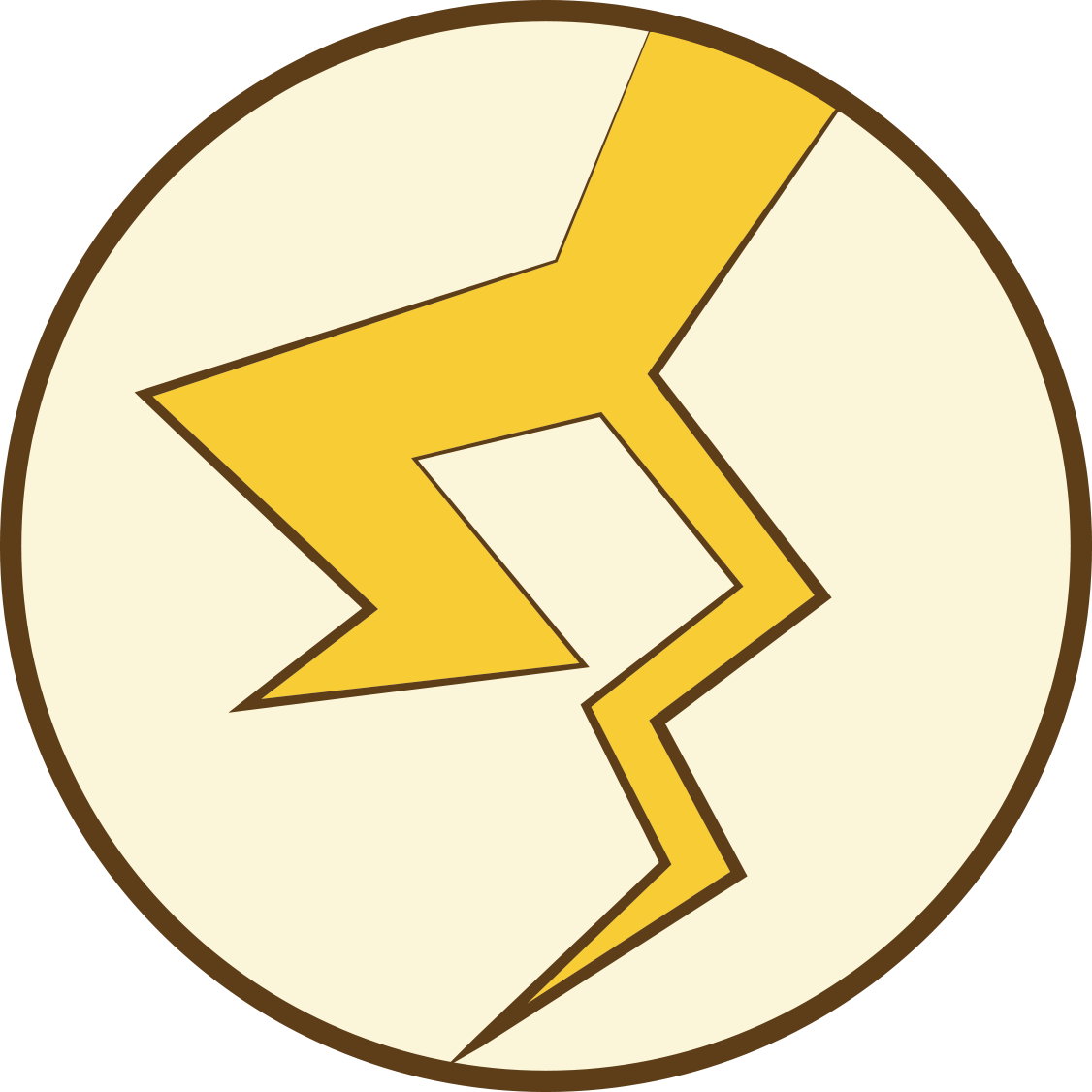
Derived: Lightning
- Strong against Metal
- Weak against Frost
- Derived from Sky and Pyro -
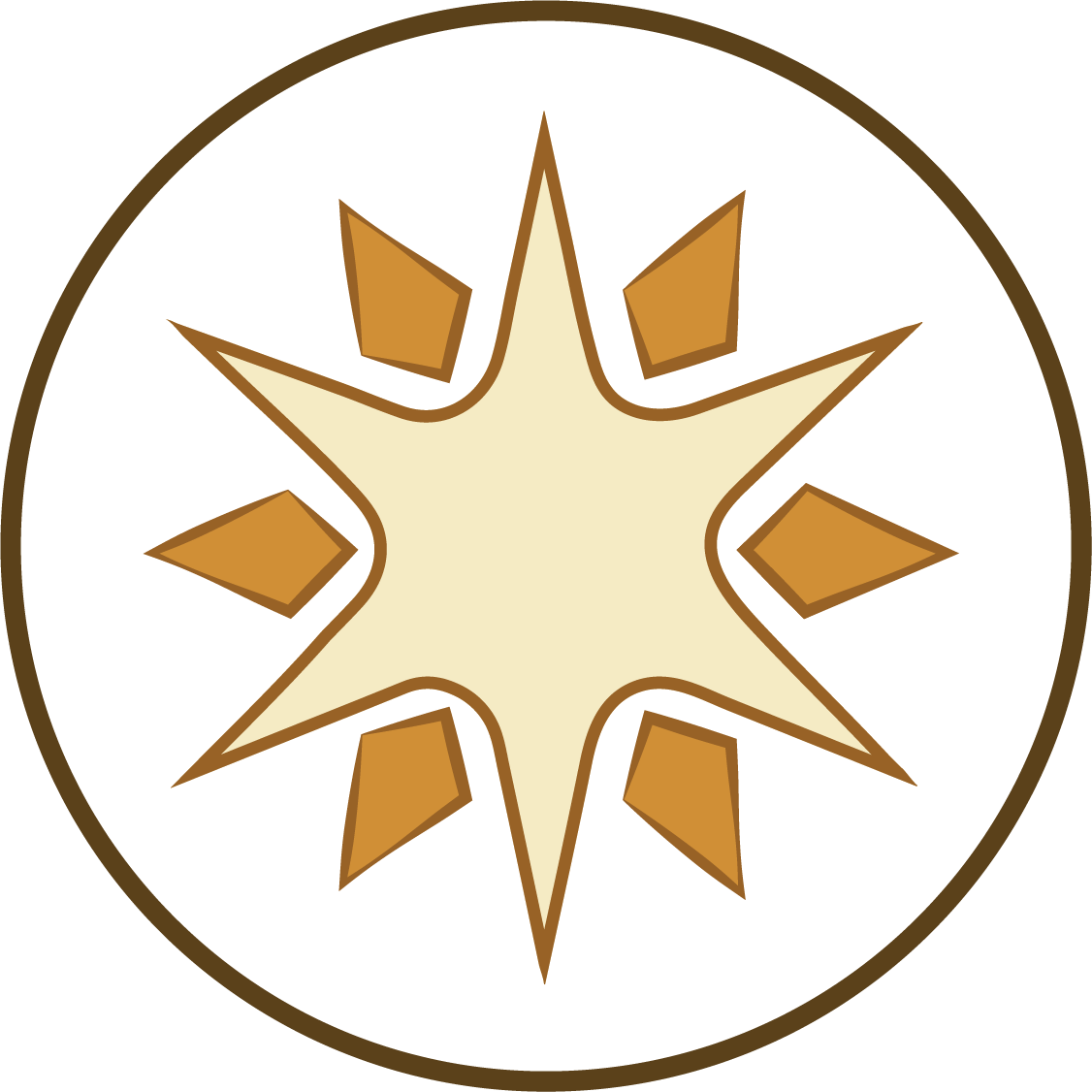
Special: Bright
- Strong against Dusk
- Weak against Dusk -
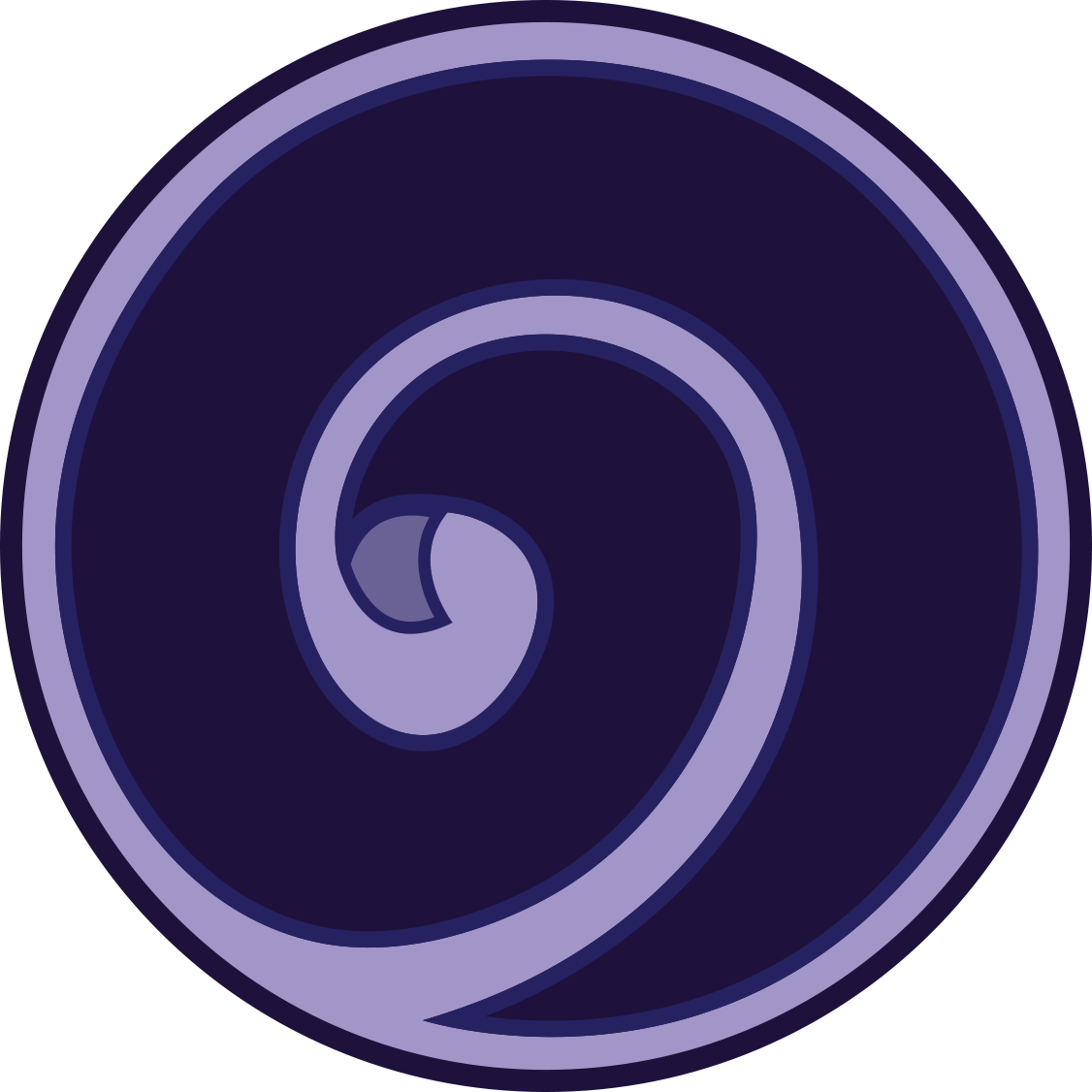
Special: Dusk
- Strong against Bright
- Weak against Bright -
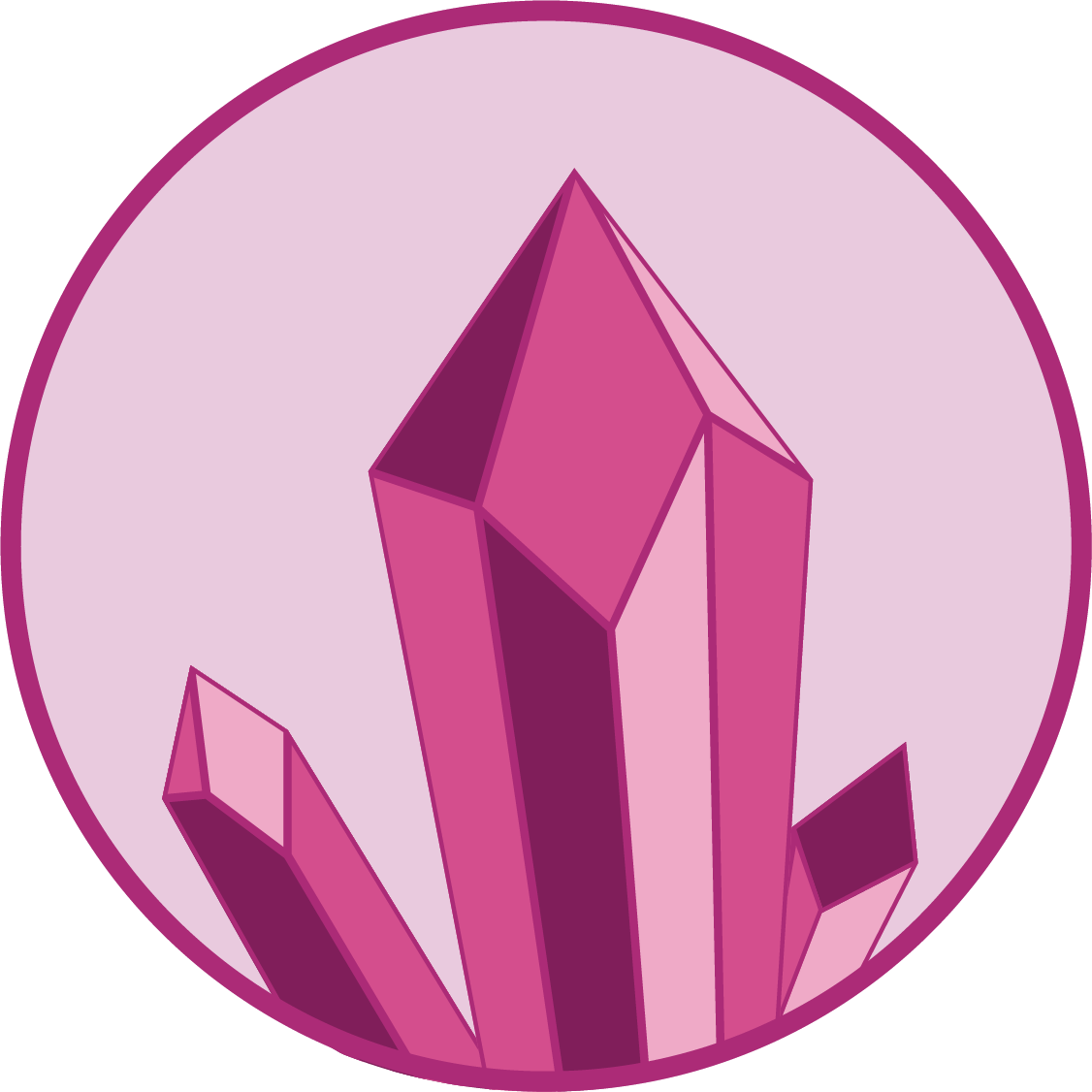
Special: Crystal
- Strong against Crystal
- Weak against Crystal -

Special: Void
No strengths or weaknesses
Abilities
Passive abilities (blue) are activated when the card is played. Active abilities require Mana to be tapped from the player's Mana Pool to cast.
Game Zones
Deck : Draw Pile
Beyond : Discard Pile
Mana Source : Mana Draw
Mana Pool : Mana Pile
Hand : Playable cards drawn from the Deck
Battlefield : Game Board where cards are placed. Consists of the Outpost, Auxiliary, and the Frontline.
Turn Phases
Each turn is made up of 6 Phases.
Untap
- Untap all Units, allowing them to Move or Cast Abilities
Upkeep
- Add/Remove damage tokens from Status Buffs and Ailments
- Apply Passive Abilities that occur each Turn
Draw
- Add a Card from one's Deck to their Hand
Placement
- Add Mana to Mana Pool
- Place Unit by Tapping the required Mana in the Mana Pool
- Build Structure by Tapping the required Mana in the Mana Pool
- Manifest Anima
Movement
- Move a Unit on the Battlefield by up to the amount of Tiles specified by the Unit's Mobility statistic
Attack
- Tap the associated Mana Cost of an Active Ability to use that Ability
- Only 1 Active Ability can be used per Unit each turn
- Tap the Unit using the Ability, indicating that they cannot use another Ability
- Apply the Effects of the Ability
Status Effects
-Status Ailments
: Burn
: Poison
: Freeze
: Stun
: Exile
-Status Buffs
: Recover
: Regen
: Stealth
: Immune
: Cleanse
Statistics
-

Health
Amount of Hit Points the Unit has - when Health reaches 0, the card is Vanquished to the Vanquished Realm
-
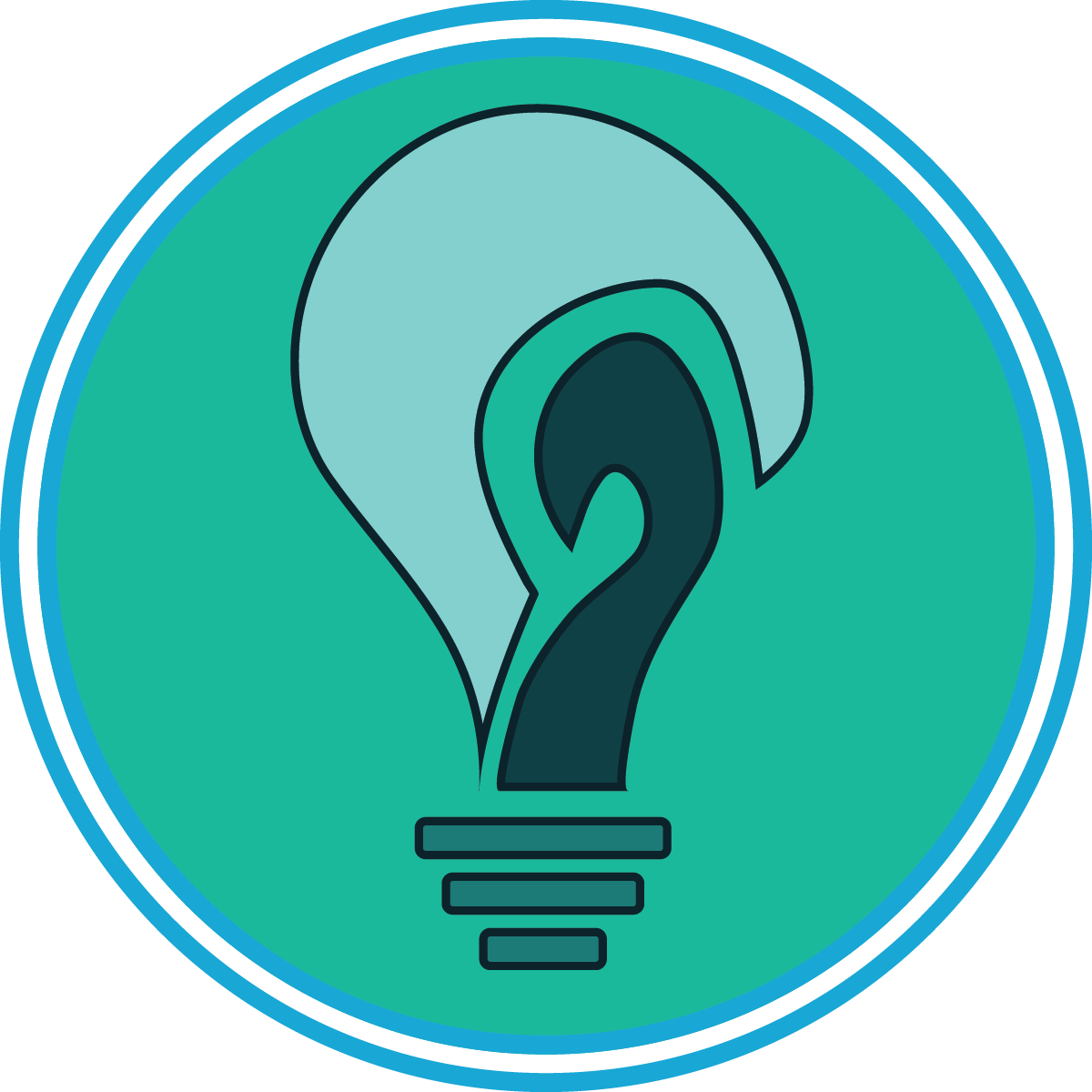
Intellect
Allows the Unit to cast abilities
-
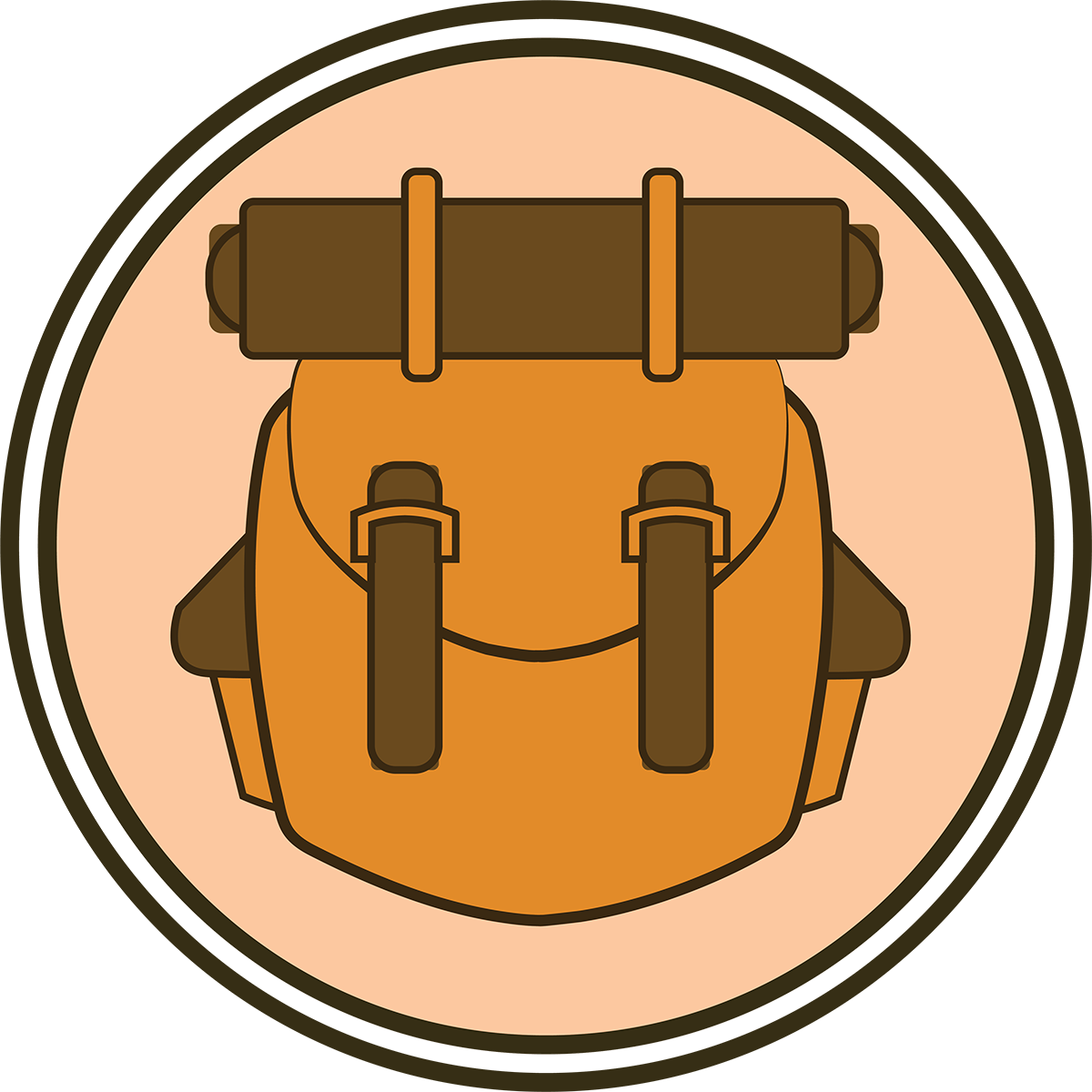
Dexterity
Allows the Unit to wield Equipment
-
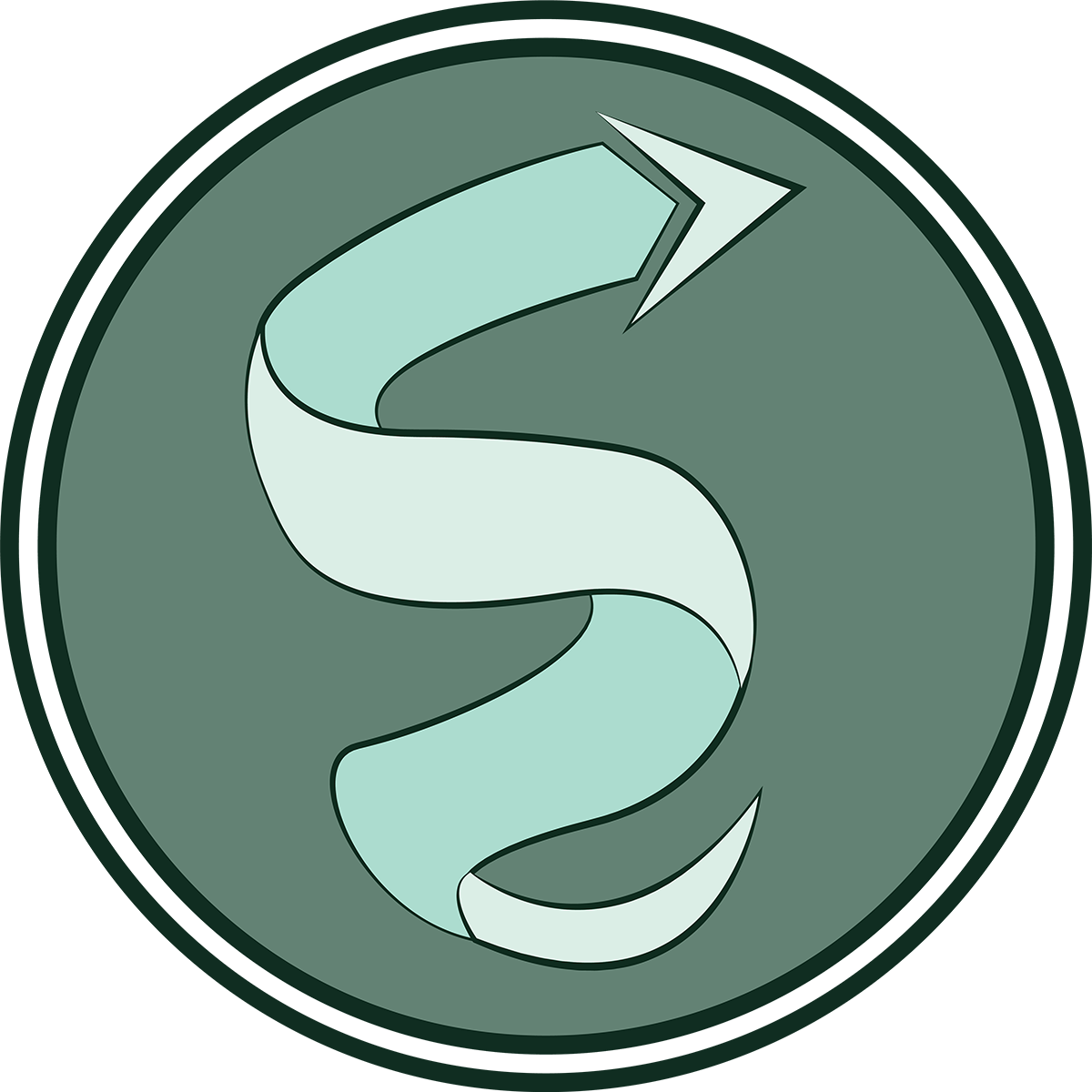
Mobility
Determines the number of tiles the Unit can move in a turn
